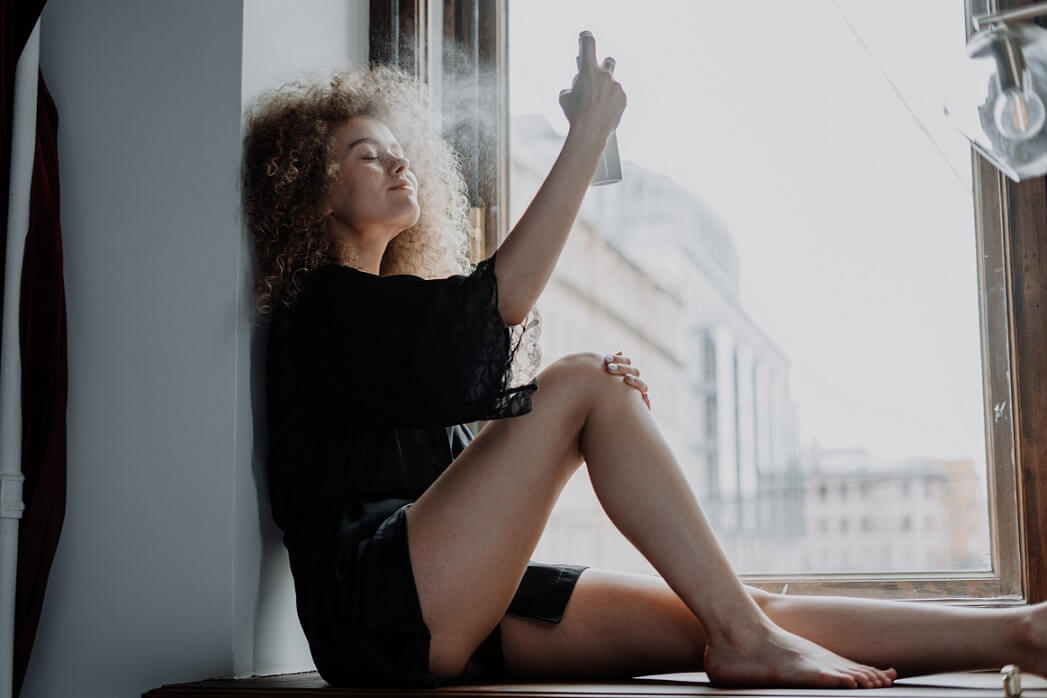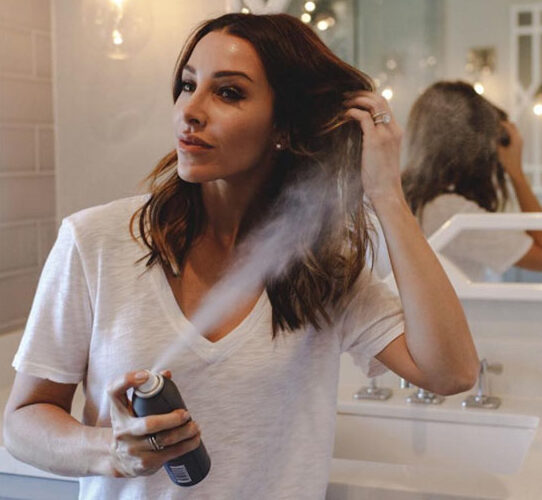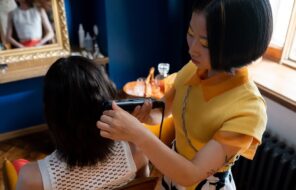In an ideal world, you’d have nothing but time to get ready in the morning. This would include a luxurious shower or relaxing spa-like bath — complete with a 15-minute-long hair-washing routine to get every strand perfectly clean and conditioned.
But we live in the real world, and that’s not always a possibility. Late nights, oversleeping, getting to work on time, caring for a family, or simply not wanting to spend all morning in the bathroom means you may not have time for an indulgent haircare routine. Thankfully, dry shampoo is an invention that’s made life a lot easier for many.
All you need is a quick spritz and shake, and you’re out the door. However, as with any beauty product, there’s a right and a wrong way to use dry shampoo. From finding the right pick for your strands to learning how to use it effectively, don’t grab that dry shampoo spray without reading our quick tutorial.
What is dry shampoo?
Dry shampoo is not a shampoo in the traditional sense of the word. Unlike traditional shampoo liquids and bars, this is a product that can best be described as a quick fix. The most common form is a powder-like spray intended to soak up excess oil.
Rather than cleansing your scalp or strands, dry shampoo masks your hair’s oily appearance, covering up dirt, grease, and grime. This can allow you to stretch yesterday’s (or the day before’s) washed hair another day. Dry shampoo can be a lifesaver for anyone stepping back from daily hair washing.
Individual ingredients across brands can vary, but you’ll usually find the following main options designed to absorb moisture quickly: alcohol, aluminum, kaolin clay, corn starch, rice, or even butane and propane.
Types of dry shampoo

While powder sprays are the most common option, dry shampoos come in mousse or even hairspray form. Traditional dry shampoos have a reputation for leaving a white film on your hair, thanks to the powder. So, you can also look for invisible sprays or shade-matching support to resemble your hair color closely.
Picking the right dry shampoo for you
Historically, dry shampoo was viewed as a product reserved for people with oily hair. This typically meant that individuals categorized as type 3 or 4 (curly and coily heads who don’t have enough oil in their hair) on the Andre Walker hair type scale weren’t suited for this product.
These days, manufacturers have realized that anyone with a head of hair might want to stretch a few more styling days between their wash days. If you’re unsure what to prioritize for your hair type, thickness, and color, check out the chart below.
| Hair type | Dry shampoo characteristics |
|---|---|
| Straight/wavy and oily | Virtually any dry shampoo will work. Search for volume or shade-matching support. |
| Fine | Along with oil control, look for volumizing support. |
| Dark | Avoid traditional sprays that leave a white residue. Look for invisible or shade-matching sprays. |
| Dry | Look for a dry shampoo with hydrating ingredients like argan or coconut oil. |
| Curly/coily | Search for a dry shampoo with hydrating ingredients. Also, consider volumizing support to stretch your style power. |
How to use dry shampoo
As with any haircare product, there’s a right and a wrong way to use dry shampoo. No matter your hair type, texture, or color, these tips can help you get out the door faster.
Work in sections
Dry shampoo works best when you can target the roots effectively. To do this, you need to create even sections for proper coverage. It’s best to create sections no more than 2 inches apart.
Mind your distance
Dry shampoo is not hairspray, so you don’t need to spray it all over your head randomly. Instead, concentrate your efforts closer to the roots since this is usually where excess oil can accumulate. Haircare experts recommend keeping a distance of roughly 6 inches between the container and your roots.
Give it time
Dry shampoo works relatively quickly but still needs a little time to work its magic. Ideally, you’ll need at least five to 10 minutes for the shampoo to sit undisturbed and absorb the oil effectively. So, plan accordingly.
Blend, blend, blend
Even if you pick an invisible or shade-matching dry shampoo, you want to make sure it’s truly undetectable. After you’ve given the product time to absorb the excess oil, use your fingers or a brush to work through the roots.
This step is especially important if you pick a more traditional dry shampoo that leaves a white residue. You probably applied to much if you have stubborn residue that won’t budge.
Tips for dry shampoo success
Dry shampoo can be a fairly goof-proof product, but we have a few additional tips just in case.
- Less is more. You can always add a bit more if necessary. Applying too much can slow down your morning routine.
- Consider applying the night before. This might sound counterintuitive, but experts suggest that using dry shampoo the night before gives the product plenty of time to absorb excess oil effectively.
- Check the date. Dry shampoo is usually intended to last between two to three years. After this, it’s time for a replacement.
- It’s not a wash substitute. Read that again. This is not a substitute for real shampoo. The occasional use won’t hurt you, but excessive dry shampoo use can dry out your hair and encourage breakage.
Less stress, more good hair days
These days, anyone can use a dry shampoo — not just those with straight or lightly wavy hair. If you’re ready to stretch the time between wash days, this is the product that should be on your bathroom vanity. Whether you like a traditional spray or need something catered to your hair type or color, there’s a dry shampoo that’s waiting to join your haircare routine.





